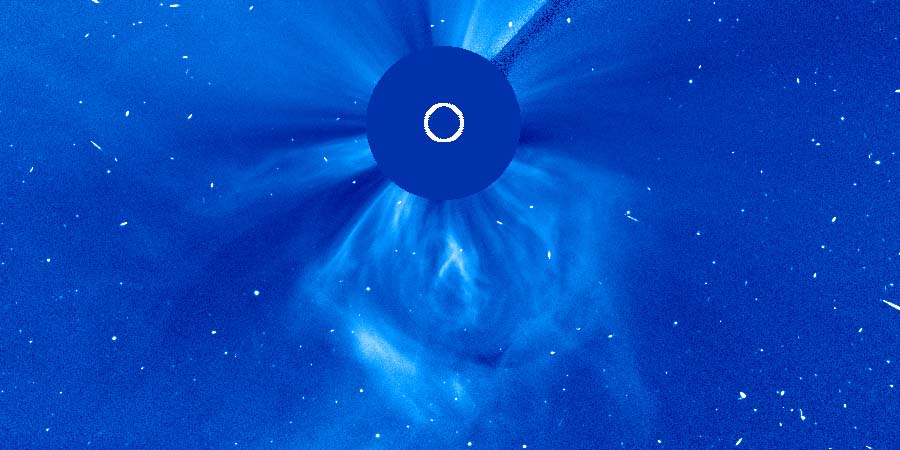New day, new coronal mass ejections to look at!
Saturday, 10 February 2024 18:34 UTC

Another day, another big coronal mass ejection... but this time it came from the south-east limb! The coronal mass ejection from yesterday's X3.3 solar flare was impressive but we have yet another fine specimen to look at. An incoming sunspot region erupted with a M3.4 solar flare that peaked at 03:54 UTC. This coronal mass ejection is just like the coronal mass ejection from the X3.3 solar flare not aimed at our planet.
Another day, another big coronal mass ejection (CME). But this time it came from the south-east limb. An incoming sunspot region erupted with a M3.4 solar flare that peaked at 03:54 UTC. This CME is just like the CME from the X3.3 solar flare not aimed at our planet. pic.twitter.com/Hq2sMdsAAo
— SpaceWeatherLive (@_SpaceWeather_) February 10, 2024
Just after the M3.4 solar flare from behind the east limb, another eruption took place just south of sunspot region 3576. The ejecta from this eruption is visible as a partial halo coronal mass ejection and the ejecta looks to be heading south of our planet. If some ejecta does arrive, we expect little geomagnetic activity from it. Sunspot region 3576 keeps a complex Beta-Gamma-Delta magnetic configuration and has the potential for M-class (R1 and R2) activity. The sunspot region is in a perfect spot for earth-directed eruptions so fingers crossed!
Just after the M3.4 solar flare, another eruption took place south of sunspot region 3576. The ejecta from this eruption is visible as a partial halo coronal mass ejection and the ejecta looks to be heading south of our planet. If some ejecta does arrive, we expect little… pic.twitter.com/nSRmxNN253
— SpaceWeatherLive (@_SpaceWeather_) February 10, 2024
Thank you for reading this article! Did you have any trouble with the technical terms used in this article? Our help section is the place to be where you can find in-depth articles, a FAQ and a list with common abbreviations. Still puzzled? Just post on our forum where we will help you the best we can!
Latest news
Latest forum messages
Support SpaceWeatherLive.com!
A lot of people come to SpaceWeatherLive to follow the Sun's activity or if there is aurora to be seen, but with more traffic comes higher server costs. Consider a donation if you enjoy SpaceWeatherLive so we can keep the website online!

Space weather facts
| Last X-flare | 2024/12/08 | X2.2 |
| Last M-flare | 2024/12/22 | M1.0 |
| Last geomagnetic storm | 2024/12/17 | Kp5+ (G1) |
| Spotless days | |
|---|---|
| Last spotless day | 2022/06/08 |
| Monthly mean Sunspot Number | |
|---|---|
| November 2024 | 152.5 -13.9 |
| December 2024 | 103.3 -49.2 |
| Last 30 days | 115.4 -40.8 |


